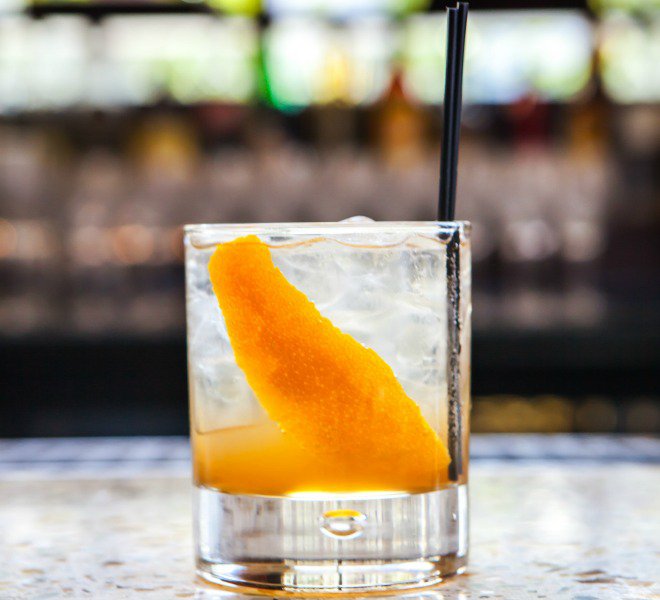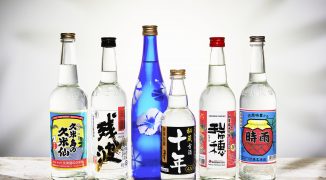Earlier this month, I wrote an article for Tales of the Cocktail about the benefits of making your own tonic water. While researching the story, I came across a few references to the health risks of large amounts of quinine — one of the ingredients in tonic. Surely, I thought, the small amounts in most tonic water recipes couldn’t be dangerous?
I was wrong. Quinine (which comes from the bark of cinchona trees) can cause serious health issues, even in small amounts. Readers criticized the piece, with several people leaving thoughtful comments about the health dangers associated with housemade tonic.
At Tales, we’re excited by new ingredients, and we love promoting new recipes and homemade products to bring into your bar. But anything homemade carries risks that pre-packaged ingredients sometimes don’t.
It’s ‘bitter for a reason’
The current trend toward housemade everything makes it easy to sniff at buying something you could make yourself. But companies making bottled tonic have lawyers and food scientists, and are governed by strict food safety rules before they can put something on the market. Bars don’t. That’s why the burden falls on bartenders to know if the ingredients they’re using in their drinks can harm customers.
Before Jordan Silbert started Q Drinks, he made tonic syrup in his New York apartment. He thinks it can be safely made at home — “I safely made it,” he said — but emphasized that cinchona bark is a powerful substance. Before he started making his tonic, he researched its dangers, including the FDA’s rules for its use in tonic water.
“Quinine is a bitter and bitters taste bitter for a reason — they [can be] poisonous,” he said. “The FDA is concerned about the absolute worst-case scenario. Quinine gets your system going [and] aids circulation and digestion at low levels. Some person with a weak heart who drinks like 20 tonic waters, they want to make sure that that guy doesn’t die — that’s what the FDA’s there for.”
As mentioned in the previous piece, tonic was originally used as a medicine to treat malaria and has been used to treat leg cramps (though the FDA cracked down on that years ago). Like any medicine, it has side effects. An excess of quinine can cause cinchonism (nausea, vomiting, headache, dizziness, ringing in the ears, visual disturbances) or more serious effects like abnormal heart rhythms. In rare cases, it can cause death. That’s why the FDA regulates its use.
“Cinchona bark is allowed for flavoring beverages under section 172.510 in Title 21 of the Code of Federal Regulations, as long as the following limitations are met: 1) Although the Cinchona plant genus contains numerous species, only bark from Cinchona succirubra Pav. or its hybrids; Cinchona ledgeriana Moens, Cinchona calisaya Wedd., or hybrids of these with other spp. of Cinchona may be used; [and] 2) the total cinchona alkaloids in the finished beverage is not more than 83 parts per million,” Marianna Naum, a communications staffer for the FDA, told me in an email. “Local bartenders would have to adhere to these limitations.”
But as this Alcademics article points out, homemade tonic recipes often result in tonic syrups with much higher quinine concentrations than that FDA allows. And even if you’ve done the math, and are confident that you’re using an appropriate amount of quinine, there are still dangers: cinchona bark also contains the compound quinidine, an anti-arrhythmic that can cause extremely serious health issues, even in small doses.
Making it as safe as possible
When Chicago’s Scofflaw developed its own tonic, the people there did everything they could to make sure they were using a safe amount of cinchona bark. “We keep in mind the amount per total volume of the cinchona and then we also do multiple filtrations,” bar director Danny Shapiro said. They experimented with cinchona bark powder (which many people like because it’s easier to measure) but switched to chunks of the bark, because it was easier to filter out, and ensure they were removing as much cinchona as they could. When they filter it, they do so several times, using a strainer and multiple coffee filters.
The filtering is vital because even if a small amount of the bark remains, you’re exposing patrons to the potential risk of quinidine. Avery Glasser, the co-founder of Bittermens (which makes a tonic liqueur), experienced cinchonism after drinking a bar’s housemade tonic during Tales a few years ago. Glasser pointed me to a recent post by First, Do No Harm, a forum for bartenders to discuss ingredient safety, outlining the effects of quinidine.
“As my personal research has continued, it looks like this is one of the primary reasons that the beverage industry moved to using refined quinine or quinine HCl instead of using cinchona or cinchona extract — specifically to eliminate quinidine and then control the amount of quinine in a final product,” Glasser wrote in an email. “It seems that in the industry’s rush to go back to resurrecting old ingredients and techniques, this was never caught.”
The safest route
In its post, Do No Harm concluded that unless bartenders can definitively confirm the amount of quinine in their drinks (by using chemical grade versions like purified quinine or quinine HCl powder), bars shouldn’t make their own tonic. Glasser agrees.
“Unless you happen to have access to pharmaceutical grade quinine, then the answer is that there really isn’t a safe way to do it,” he said. “Find a tonic syrup which uses quinine, or use one of the premium tonic waters out there.”
Many bars will continue making housemade tonic, confident that they’ve found a safe way to do it. Whether or not you decide to make your own, the discussion over housemade tonic demonstrates an important lesson.
Don’t rush to participate in a new trend without carefully examining the risks. Before you put something new on the menu, study not only its flavor profile and what spirits it pairs with, but the less-fun technical stuff: What’s it made of? Are there any health implications, even if they’re a rare case? When you make something new, are you carefully measuring ingredients, or just adding more and more until you get the right taste, unaware of how much is in the finished product?
As a recent Imbibe article pointed out, bartenders are liable if a customer gets sick off one of their drinks. That’s a rarity, but it underscores the importance of researching any new ingredient — for the sake of both your customer’s health and your peace of mind.





